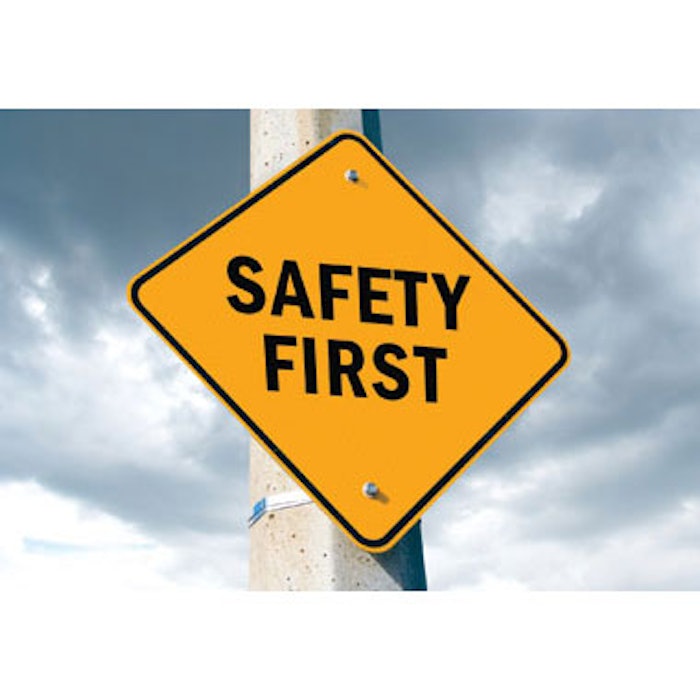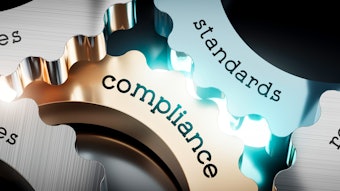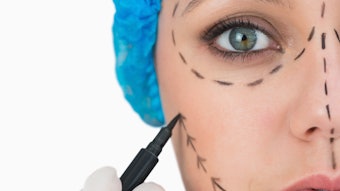
Your patients may think of the laser treatment rooms within your aesthetic practice as magical places that make wrinkles and redness disappear, unwanted tattoos and hair vanish and a more youthful complexion appear. But, if not properly stocked and supervised, these treatment rooms can pose a threat to both providers and patients in the form of permanent eye damage, burns and communicable disease. To help practices minimize these risks, we asked laser safety professionals to share the most effective laser safety practices for aesthetic laser providers.
Laser Safety Basics
Before starting any laser treatments, practices need to make sure that the treatment rooms in which these procedures take place are properly equipped for patient and provider safety. In addition to autoclaving all equipment—including treatment heads—that are used on patients, and disinfecting the rooms between treatments, there are several concerns unique to the use of lasers.
Both operators and patients must wear protective eyewear during all laser treatments. “Eyewear must be appropriate for the wavelength of each laser being used, and that goes for the patient and the provider,” says Daniel Ramon, a manager with CLS Surgimedics, which offers smoke evacuation units for aesthetic laser facilities.
At the Laser & Skin Surgery Center of Northern California in Sacramento, California, founded by Suzanne Kilmer, MD, laser patients and operators wear safety glasses with an optical density of six or greater to reduce the risk of eye damage. Because the goggles are created to block specific wavelengths, providers and staff members are trained to select goggles that cover every wavelength used during the treatment session. In addition, patients receiving laser treatments within the orbital rim must don protective eyewear with internal metal shields, also called corneal shields.
Facilities should place signs on the door of the treatment room during a procedure. “State that a laser is being used, and also note which type,” says Ramon. He recommends that providers keep treatment room lights as bright as operations permit. “I also recommend hanging extra eyewear outside of the room, so that anyone entering mid-procedure will be equipped with appropriate protection,” he says.
As lasers burn away unwanted hair and, in the case of ablative lasers, top layers of skin, they create smoke plumes that not only smell bad but can carry dangerous particles. “It’s well-documented that surgical and laser smoke plumes contain hazardous gases, cellular material and viruses, and that these plumes could cause respiratory and eye irritations, or nausea, in patients or providers,” says Ramon. “Smoke can also reduce visibility of the procedure site for the technician.”
Therefore, a smoke evacuator is crucial to patient and provider safety. These devices are used to remove and filter toxic plumes created in the operating room during electrosurgical and laser procedures.
Since lasers create heat, cooling is integral. Most new devices have built-in cooling modalities, which should be tested prior to every treatment. It’s also smart to keep other cooling agents on hand, says Gregory Absten, executive director of the Professional Medical Education Association, parent company of the Laser Training Institute in Marathon Shores, Florida. “Think cold gels, clear ultrasound gel, cold plates made out of materials like sapphire, cold air blowers, or cryogen sprays,” he says. “Skin is more sensitive to heat than we often realize.”
Because the laser beams can reach far beyond the treatment area, practices need to cover all windows in laser treatment rooms and remove any mirrors, says Tracey Stockwell, director of the National Laser Institute Medspa, Scottsdale, Arizona.
Don’t forget about your basics, either. Stockwell reminds providers that closed-toed shoes are a must. “Same goes for a first-aid kid in each room, an eye wash kit and gloves.”
Ablative Concerns
Ablative laser treatments, including fractional ablative devices and Q-switched tattoo removal devices, vaporize layers of skin. “When you ablate, you’re actually removing tissue—taking skin layers down,” says Absten. “And there are some nasty things that can happen if someone doesn’t know exactly what they’re doing.”
This is where smoke evacuation becomes even more crucial. “The smoke that’s being evacuated during services such as ablative, Q-switched tattoo removal is ‘biological smoke’,” Ramon says. “It’s been proven to carry harmful molecules of all types.”
Dr. Kilmer keeps special, higher-powered evacuators on hand for such services. “Especially for ablative erbium laser resurfacing, there’s going to be much more smoke than in typical services,” she notes. “And when it comes to tattoo removal treatments, even live tissue can potentially become airborne.”
Laser Safety Protocols
Documented protocols and checklists are a good way to keep all providers on the same page—and ensure that they keep one another in check, safety-wise. Dr. Kilmer maintains an individual protocol for each laser service that her practice performs. In addition, medical personnel at her facility must be trained to respond to fire, syncope, seizures, and even respiratory and cardiac arrest, before providing any laser services. “These all are potential adverse reactions to treatment,” she says.
In addition to treatment protocols, Stockwell creates a laser check list for each service. Each list contains a comprehensive run-down of what do when “opening” and “terminating” any laser usage session. “Remember to include detailed information about all laser keys, the typical settings used, and warning signs of adverse events,” Stockwell advises. “I also make sure each room is stocked with incident reports and laser manuals—and that everyone knows exactly where they are.”
For larger practices that offer a wide range of laser and light devices, Ramon recommends designating one staff member as Laser Safety Officer, or LSO. “This person is on-hand during laser procedures, and equipped to help handle any and all situations,” he explains.
But treatment protocols do not replace comprehensive training. “You cannot apply blanket rules across the board and have them be universally applicable,” says Absten. “Your patients are not pastries; you can’t use a cookbook to treat them.”
Laser Safety Training Strategies
The optimal time to reinforce your practice’s “safety first” ethos is during training, which should be comprehensive and include the history of medical lasers, how these devices interact with the skin, and individual training on each type of laser and device-based treatment offered in your practice. “It usually takes about three full days to go through all this,” Absten says. “It should take at least that long before one even approaches a machine.”
Dr. Kilmer mandates basic, and specific, laser training for all providers, renewed annually. “A lot of my staff gets it through training sessions at ASLMS, but many other medical meetings have great laser courses, too,” she says.
Her practice also takes advantage of equipment manufacturer training. “Every couple of months, we have companies provide in-services for our individual devices,” she says.
In addition to manufacturer training and medical conferences, there are several companies that offer laser safety officer training programs as well as treatment-specific laser training.
Some companies, such the Laser Institute of America, offer online laser safety officer training, which allows participants to gain certification on their own schedule. “The laser field changes at a rapid pace, and this program ensures our staff stays on the cutting-edge of safety training and advancement,” Stockwell says. “Students are provided up-to-date federal, state and international safety regulations; they learn the fundamentals of all terminology related to laser safety intelligence; they review the history of laser accidents; study laser-generated airborne contaminants and electrical hazards; and come away with a full understanding of laser safety officer duties and responsibilities.”
Stockwell has even formed a committee of all her on-staff LSOs. “They hold a laser safety meeting with the whole team every six months,” she says, noting that the officers are charged with keeping everyone abreast of new changes, regulations, dangers, and technologies. “They’re also tasked with making educated recommendations to alter our existing treatment protocols or to update equipment,” she says.
If you can’t spring for such training, Ramon recommends hiring or contracting with a credentialed laser safety clinician. “Letting patients know that you have a safety officer working with your practice can help boost their trust in your services,” he says.
Katie O’Reilly is a Wilmington, North Carolina-based writer.
Image copyright iStockphoto











